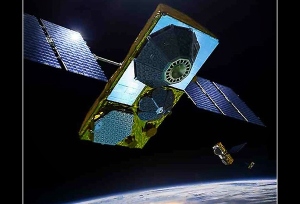EU member states’ failure to adopt a harmonised licensing approach for hybrid satellite/ground communication systems is hampering the spread of advanced mobile satellite services (MSS) across the European Union, according to a new white paper from the research and consulting firm Analysys Mason.
MSS is unique in being able to offer 100% coverage across the EU through a single service but the true potential for such a service will be lost without a unified approach to the complementary ground component (CGC) and its regulation. Analysys Mason found that wide variation in licensing regimes among EU member states erodes the efficacy of services that combine S-band MSS with CGCs using the same frequency range. Up to 99.9% of potential CGC capacity could be sacrificed as a result of restrictions adopted, or under consideration, by a handful of member states’ regulators, which in the worst cases will limit CGC use to just carrying traffic from the satellite.

“There is a clear demand for S band MSS/CGC services across the EU, but the current regulatory climate disincentivises the types of investment required to build the CGC portion which is necessary to make the MSS/CGC services a reality,” said EchoStar Satellite Services president Anders N. Johnson. “It is imperative that the EU and its member states work, as envisioned in its MSS/CGC regime, towards a harmonised regulatory regime for MSS/CGC that provides licensees with the required flexibility.”
The wide disparity in regulatory approach in what is the EU’s first pan-European licensing initiative undermines the economic viability of a pan European MSS service and runs the risk that the investment and availability of service in some countries will be left behind. If allowed to be utilised on a more flexible basis, the CGCs and MSS service could be used to support advanced applications such as machine-to-machine communications, public protection and disaster relief services, and mobile broadband, according to the report. Harmonising licensing requirements across the EU for the use of CGCs would be a significant step towards achieving an important goal of the EU’s Digital Single Market strategy―offering better access for consumers and businesses to online goods and services across Europe and maximising the growth potential of the “European Digital Economy.”
The white paper concludes European consumers will lose out if the actions of a minority of member states effectivelyblocks flexible use arrangements for GCGs across the EU. The paper quotes European Commission president Jean-Claude Junker on the importance to the sector and the broader economy of achieving a harmonised regulatory approach: “I believe that we must make much better use of the great opportunities offered by digital technologies, which know no borders. To do so, we will need to have the courage to break down national silos in telecoms regulation, in copyright and data protection legislation, in the management of radio waves and in the application of competition law.”

“We commissioned this report for an independent view of what’s happening in the MSS/CGC market. Analysys Mason’s findings confirm what we have also maintained, which is that there is a substantial public interest in harmonising licensing requirements to promote the spread of hybrid mobile/ground services,” said Jennifer A. Manner, EchoStar vice president of regulatory affairs. “The full value of hybrid services is in their portability across national lines and the freedom to use the authorised spectrum to its full potential. We encourage the European Commission to work together with EU regulatory and spectrum authorities to develop a harmonised approach to the treatment of CGCs that is consistent with the principles of efficient spectrum use, as well as technology and service–neutrality, to promote investment in hybrid networks that will span all 28 EU member states.”
Comment on this article below or via Twitter: @M2MNow OR @jcm2m










